Beacon Bright!
DM2130: Collaboration Client Project
My team, which consists of one peer and me, worked with the Winchester Beacon, a charity organisation that supports homeless people in Winchester.
Synopsis
We created three poster campaigns to raise awareness of the Beacon charity, modern homelessness, and charitable funds. Based on the information from these posters, we also created social media campaigns. I developed poster campaigns of provoking awareness of the Beacon charity and charitable funds.
While undertaking these tasks, I researched homelessness, the Winchester Beacon, and poster design.
List of Programme
We communicated with our client via email, and used Instagram to exchange information and work with peer. We also used Trello to gather ideas and information.
I used Adobe Illustrator to design those posters. Since I had limited experience using Illustrator, this task was a challenge, and I worked through it by researching as I went. I used MOCKUPS-DESIGN.COM to show my final works.
Research
To enhance my understanding of poster design and to generate diverse ideas, I conducted research on three key areas: homelessness, the Winchester Beacon, and effective strategies for eye-catching poster designs.
Homelessness
According to the Winchester Beacon (2023), homelessness is rising, with an estimated 242,000 people experiencing homelessness in 2022, an increase from 221,000 in 2021. There are different types of core homelessness, and different reasons people experience it.
Core homelessness encompasses people who are rough sleeping, sofa surfing, staying in hotels or refuges and those residing in buildings not intended for residential use.
Rough sleeping is the most apparent, dangerous (Crisis, N/A). It includes sleeping in public space, cars, doorways and abandoned buildings. An estimated 3,898 people were sleeping rough in England on a single night during the autumn of 2023, this represented a 27% increase from 2022 (the Winchester Beacon, 2023). Sofa surfing illustrates a situation in which people who is homeless stay informally family, friends or acquaintances (Evolve, 2024). They are inside and look less harmful than rough sleeping, but it is possible to become accustomed to rough sleeping at any time, and sofa surfing have harmful effects in itself. People who are staying in temporary accommodation do not have their own home, but they stay in places such as night/winter shelters, hotels, bed and breakfast (B&Bs), women’s refuges, and private and social housing (Crisis, N/A). According to them, there are also homeless people who are hiding from statistics, called hidden homelessness.
The causes of homelessness can sometimes be attributed to individual actions, however, there are also social causes. The social causes include high cost of living, poor housing quality, shortage of affordable homes and rising rents (Crisis, N/A). These causes contribute to housing insecurity, which increases the risk of homelessness. That also affects their mental health. Many charitable organisations work to support their challenges, and the Winchester Beacon is one of them. According to their research, one in three people experiencing homelessness have attempted to suicide, seven out of ten of them have a mental health issue, and 79% of them of ex-offenders who are homeless are reconvicted within one year (the Winchester Beacon, 2023).
When they shared their work with us, they emphasised that homelessness could happen to anyone.
The Winchester Beacon
As mentioned previously, the Winchester Beacon is a charitable organisation. They provide secure and comfortable accommodation all day and all night, 365 days of the year (the Winchester Beacon, 2023). During their stay, they have access to nutritious food and a wide range of practical and emotional support programmes. These efforts are designed “to transform their lives”, and ultimately “to help break the cycle of homelessness by enabling people to rebuild their lives” (the Winchester Beacon, 2023). Here is detailed information about their support (https://winchesterbeacon.org.uk/who-we-are/our-services/). In fact, alongside these services, they have made significant achievements from 2022 to 2023: they accommodated 49 people, 76% of their residents moved on to planned accommodation, residents stayed for 111 nights on an average, and they provided 288 hours of free counselling and psychotherapy.
Poster Design
In designing the posters, I conducted research on effective techniques for creating attention-grabbing poster designs. Creating a memorable poster is a challenging task, as the limited space for conveying information requires a deeper understanding of design elements to create more impactful and memorable visuals (Marq, 2024).
Layout, text, images and graphics are regarded as essential components of effective poster design (The University of North Carolina, N/A). Layout and text refer to the fonts, text size, and overall structure of the poster. Images and graphics pertain to the selection and utilisation of photographs, diagrams, and other visual elements. In poster layout design, priority should be given to alignment, balance, spacing, white space, and overall organisation. It is important to avoid overloading the design with excessive information and to structure the content in a way that guides the reader’s eye naturally from left to right and top to bottom for ensuring clarity and readability. The selection of fonts, font size, and colour plays a crucial role in enhancing the readability for the audience. The key consideration is to capture attention from a distance and ensure that the content is immediately recognisable and easily understood. Similarly, photographs, diagrams, charts, and artwork in poster design must effectively represent their concepts and communicate them in a concise and comprehensible manner. As creating poster, it is essential to strategically utilise design principles to integrate those design elements, ensuring the composition captures attention while conveying essential information succinctly and clearly.
Other research
This is a letter about homelessness that was delivered tutor's front door. This letter describes the lives of a certain homeless people. One approach was to think about how to spend awareness of the Winchester Beacon based on this letter, it was decided not to pursue this course of action.
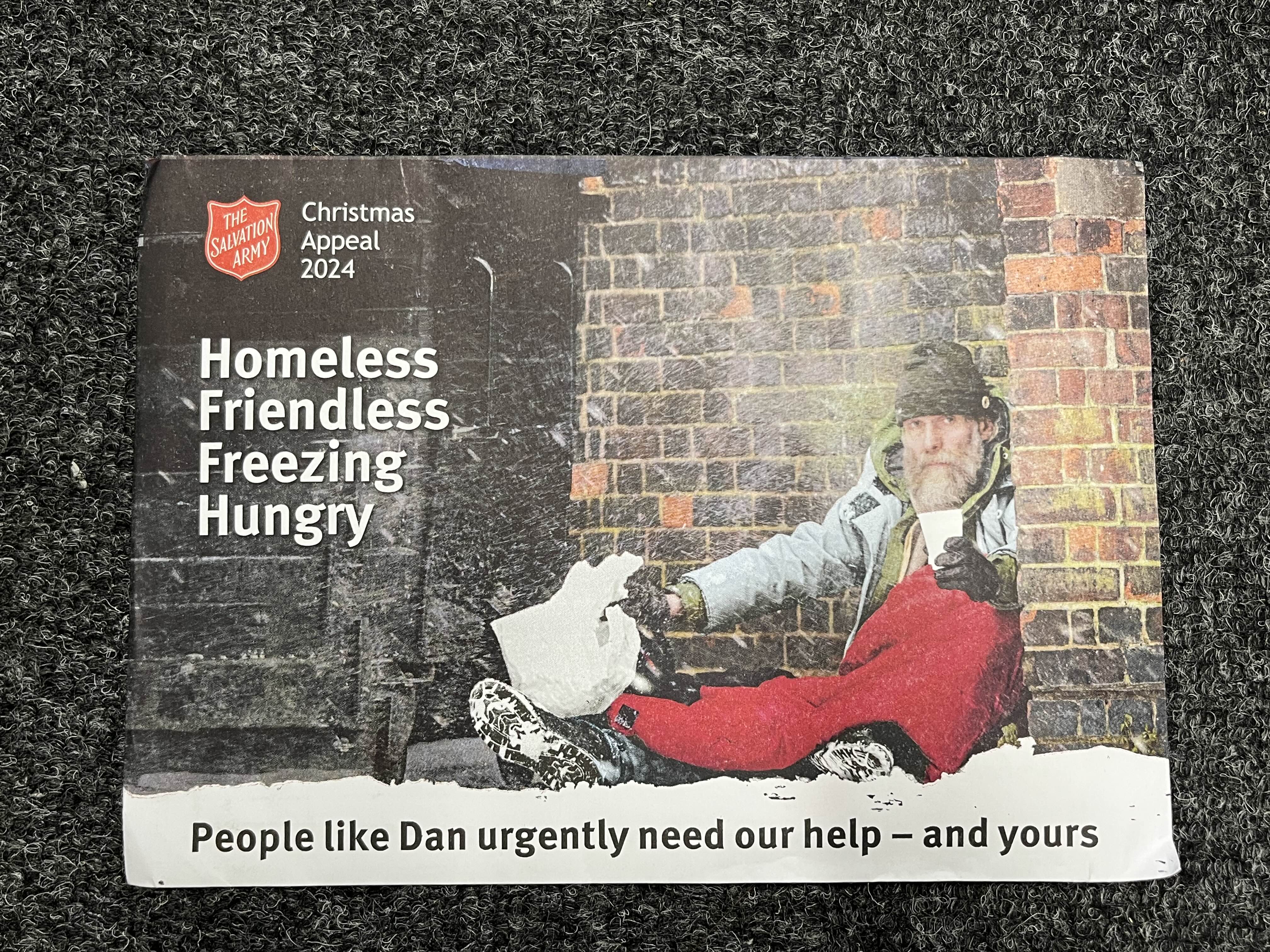
Teamwork
We reviewed information on homelessness, the brief provided by client, and details about their work together. Tasks were divided according to the poster content, and we subsequently focused on incorporating feedback. As the team consisted of only two members and neither of us wished to assume the role of project manager, the position of project manager was not designed. I was responsible for the poster campaign of awareness of the Beacon charity and charitable funds, while she was responsible for the poster campaign of awareness of homelessness. Our communication was minimal, primarily consisting of scheduling appointments with the Winchester Beacon, sharing brand guidelines from client, and provoking progress updates along with feedback. As English is not my first language, the majority of communication with the client was managed by my peer. Our work was self-contained, so we developed a plan for the presentation, but the plan was not shared afterward.
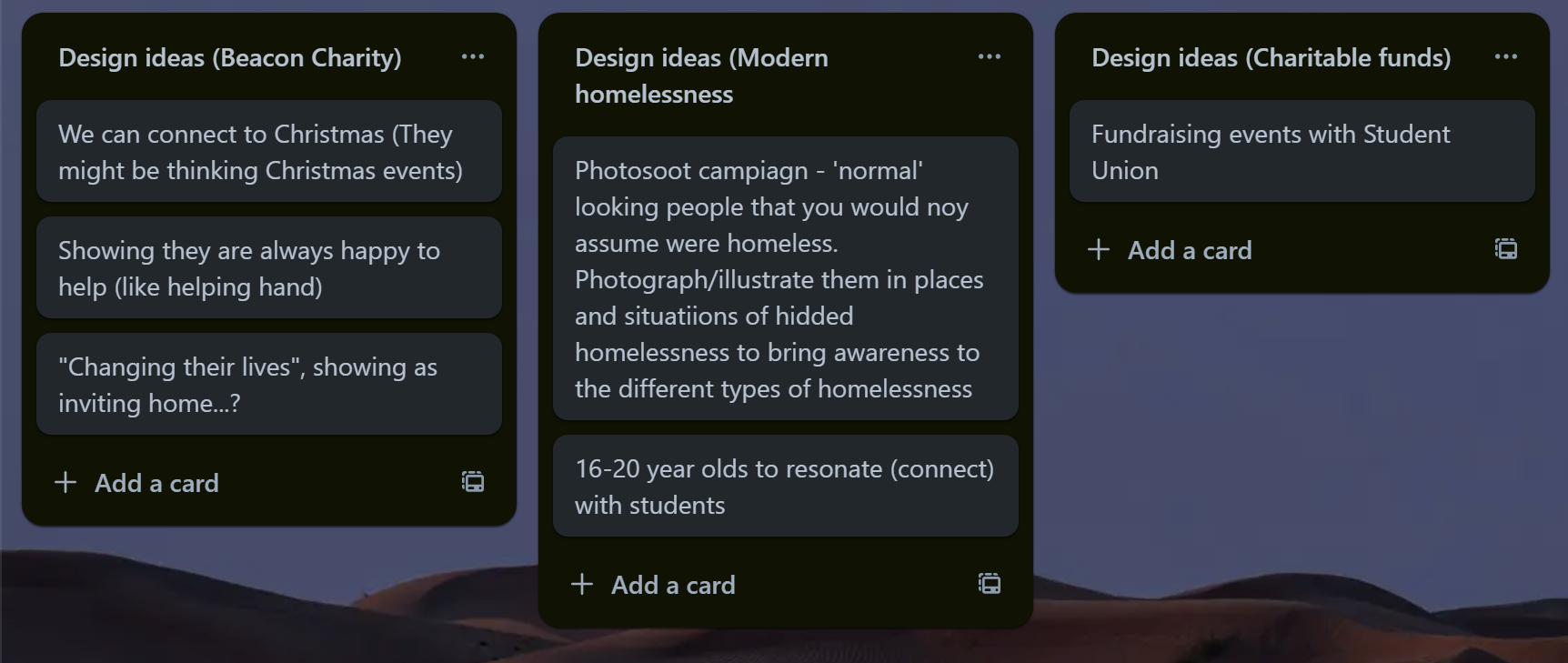
Client Conversations
We planned a visit to the Winchester Beacon to meet our client and learn more about their facilities and services. My peer contacted the client via email, and we scheduled an appointment, visiting on 4th November 2024.
The provided a tour of various rooms, including a storage room for donations from schools and churches, an IT room for job-searching purposes, and a talk room for counselling sessions. According to the client, the items in the storage room are not only allocated to those currently residing there, but may also be provided to individuals leaving, in order to assist them during their transition and ensure they are equipped for their new living situation.
In addition to the room tour, we also discussed our works. During the visit, I presented my ideas and plans. The ideas I presented were focused on poster campaign of awareness of charitable funds. I explored the potential of charity events organised by university activity groups and societies. My conversations with the client were a significant meeting that enabled me to solidify my ideas and progress to the next stage.
Idea Development
Inspiration
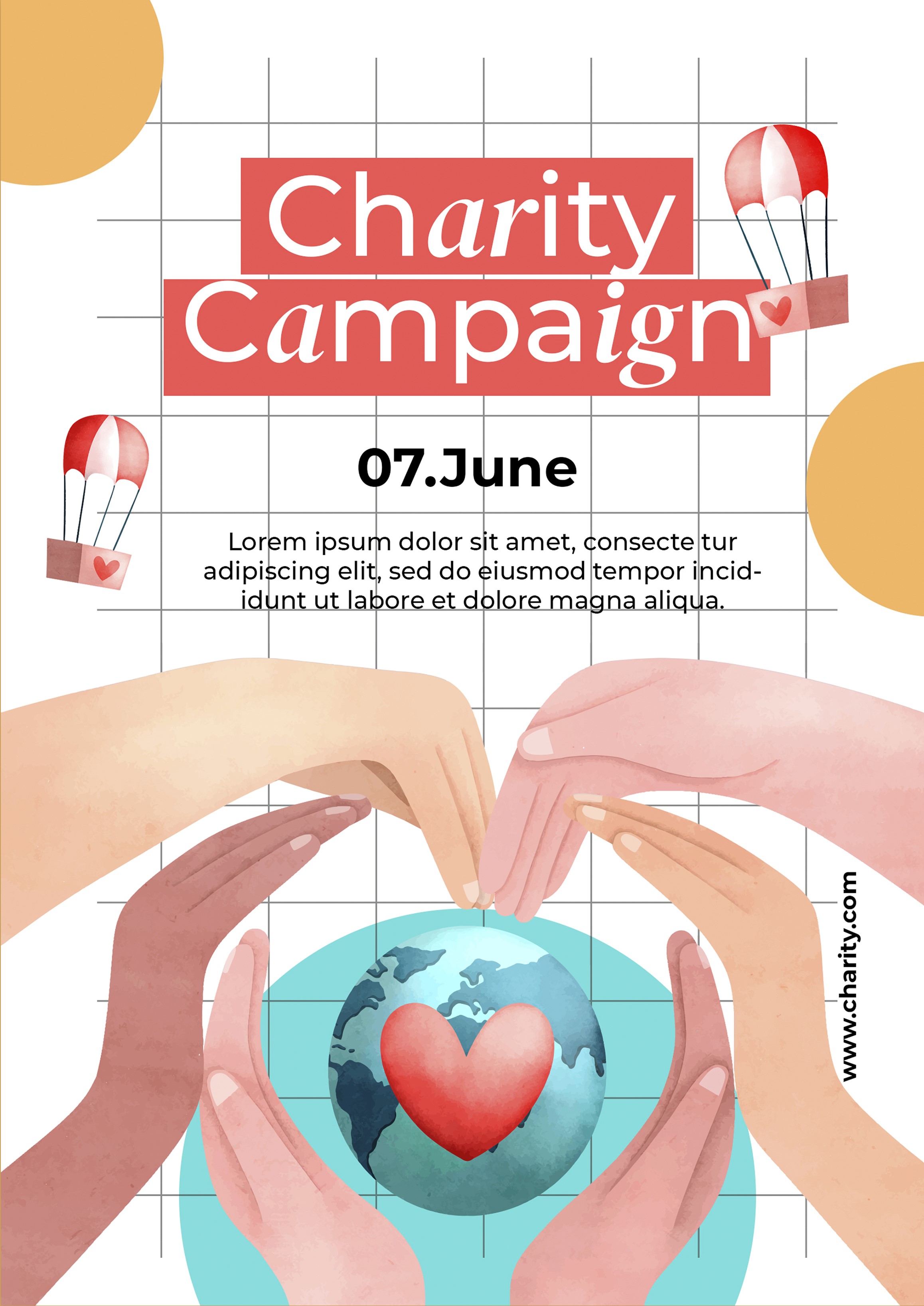

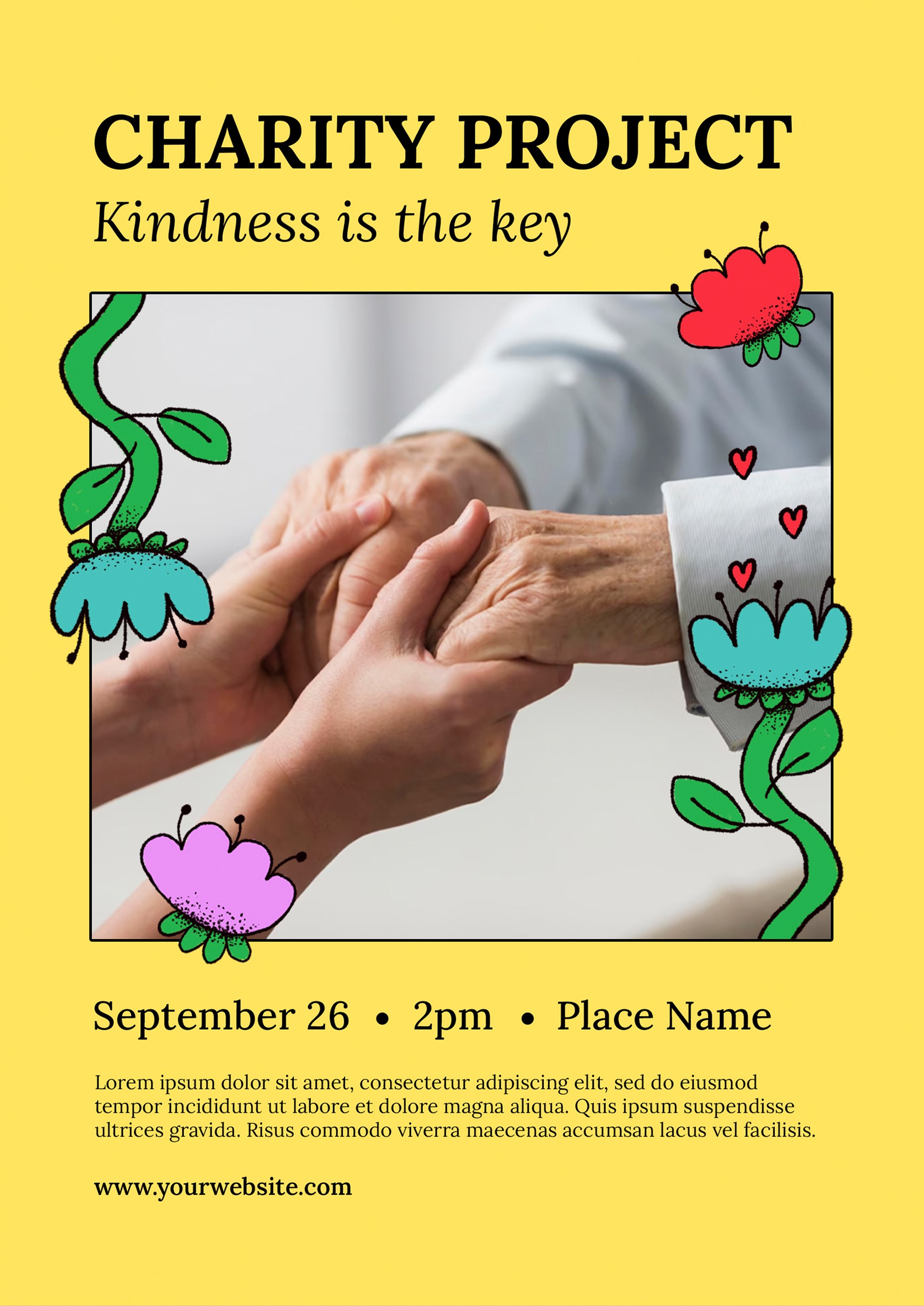
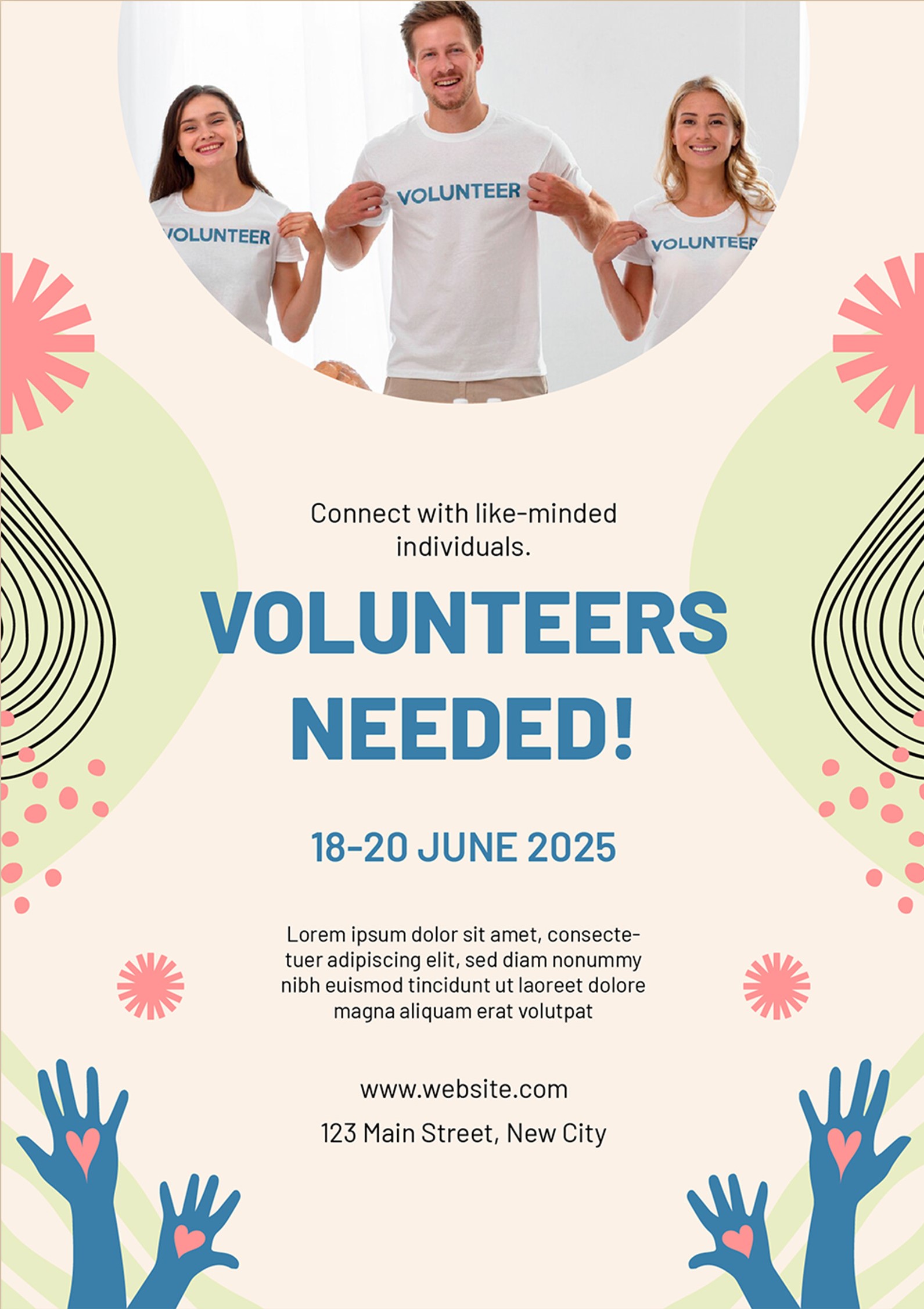
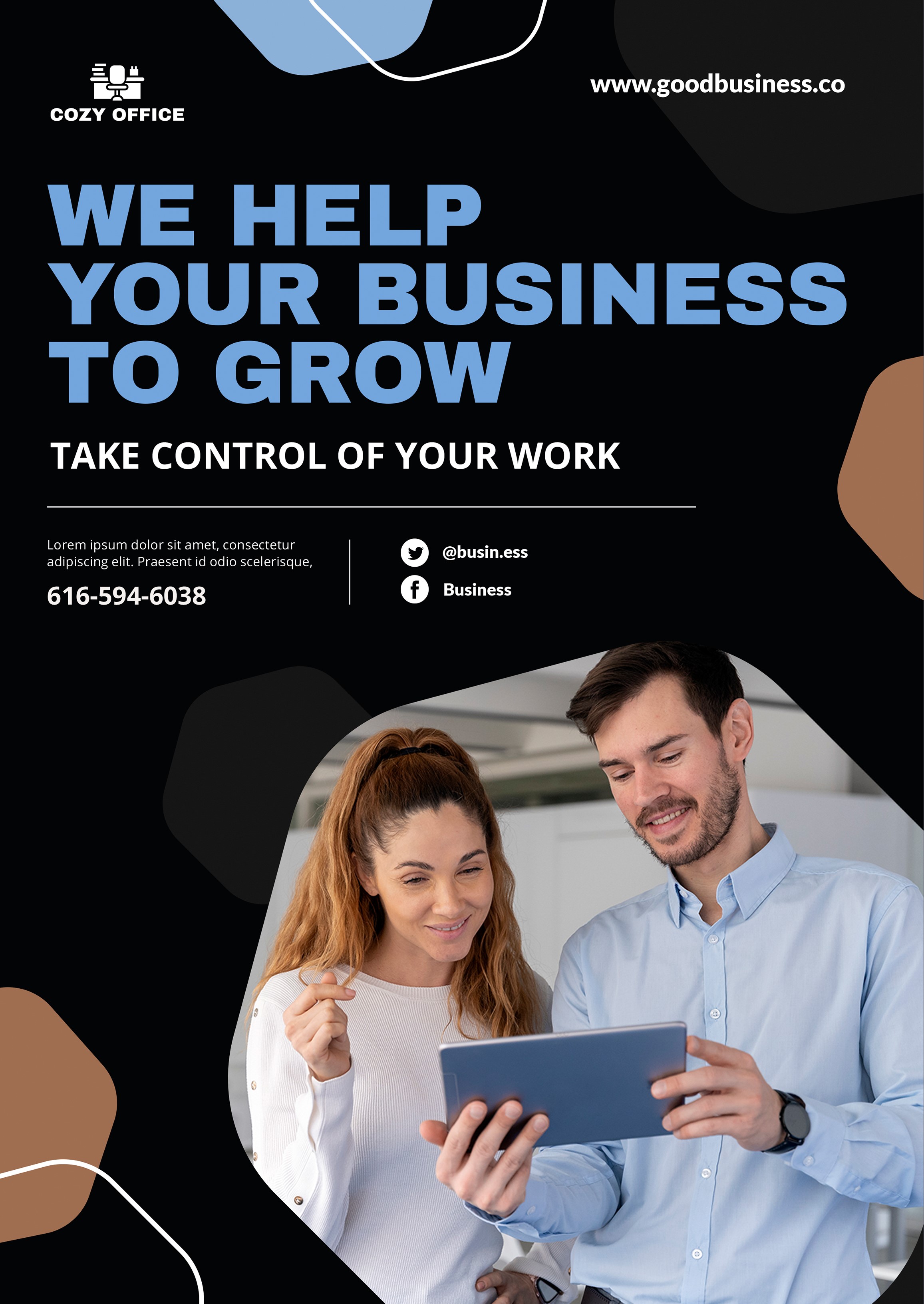
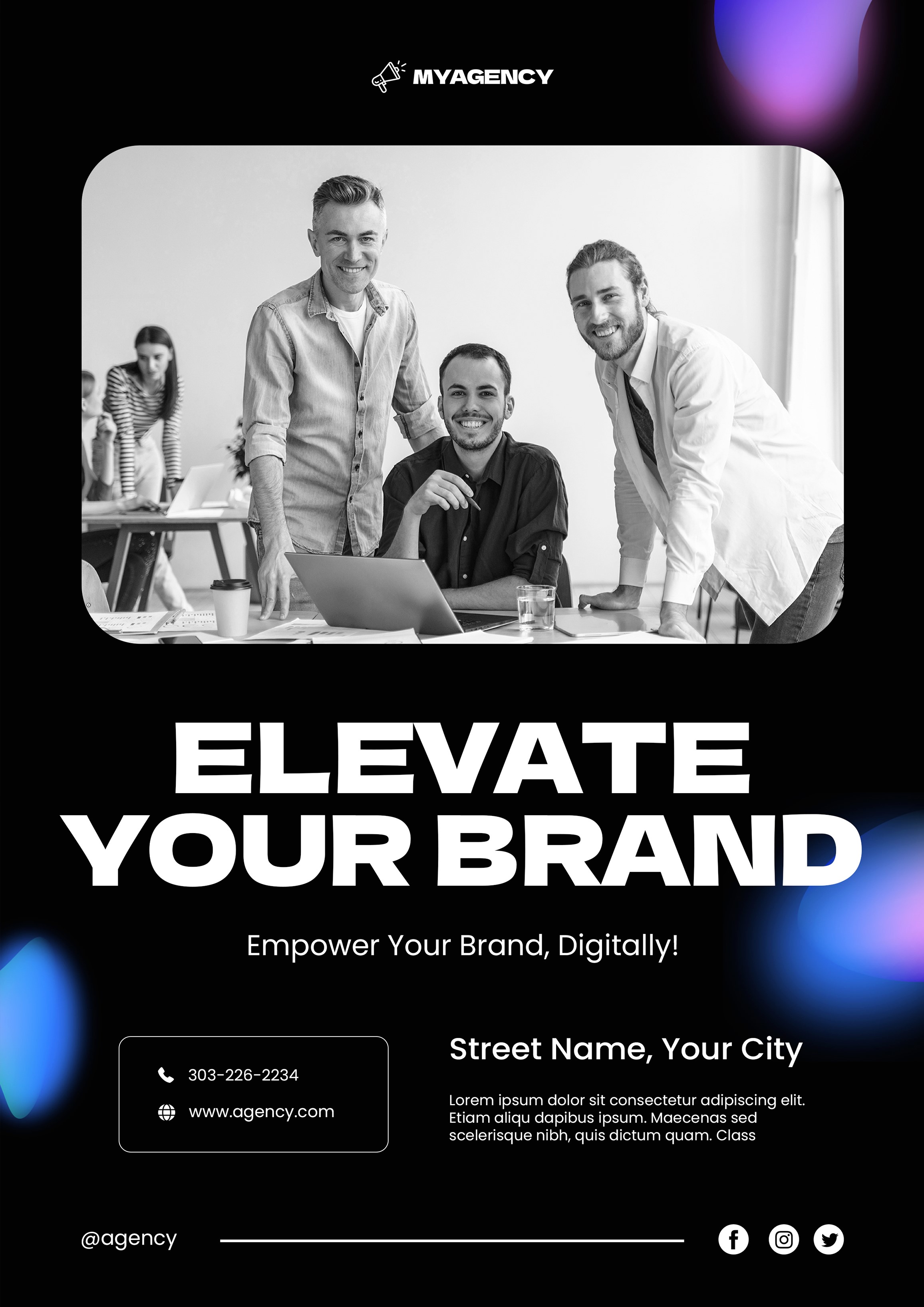

These posters were resourced from FREEP!K and served as references that I considered valuable for inspiration.
Mind Mapping
The phrase that encapsulated the Winchester Beacon’s activities and goals was derived from the call to action, “Helping Hands, Changing Lives”, which I had developed with inspiration from ChatGPT. I created a mind map based on this phrase.

Brand Guidelines
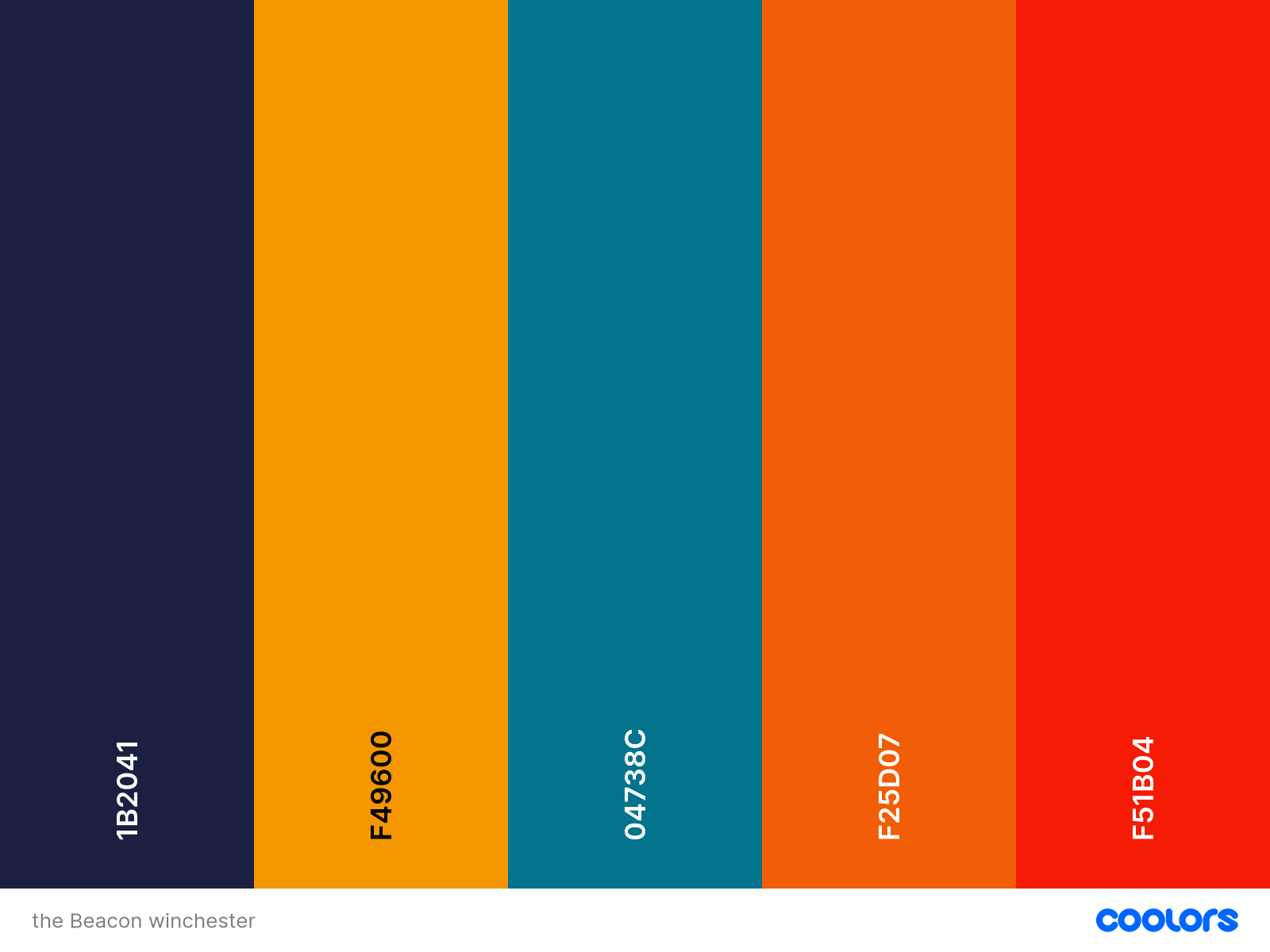
Our client shared with us their logo, colours, fonts and brand photo style for the brand guideline. Regarding colour, she provided a five-colour palette, with the two colours on the left designed as the primary colours. Then, they primarily use the Montserrat font. I worked on the poster design using these guidelines.
Photos
These photos were collected as I considered them suitable for use in the poster design.
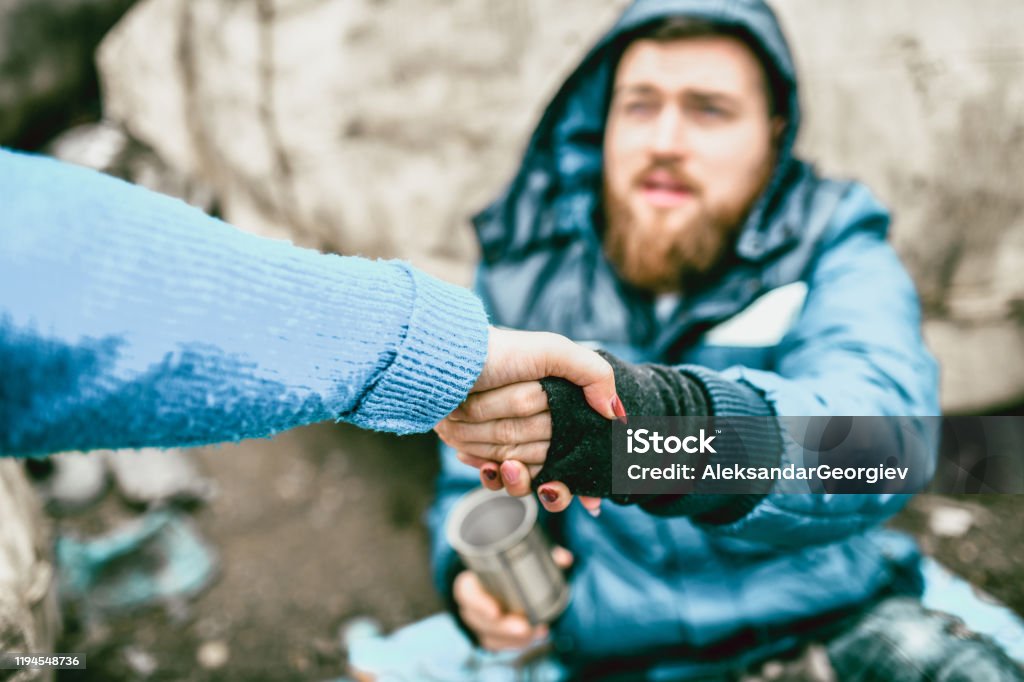

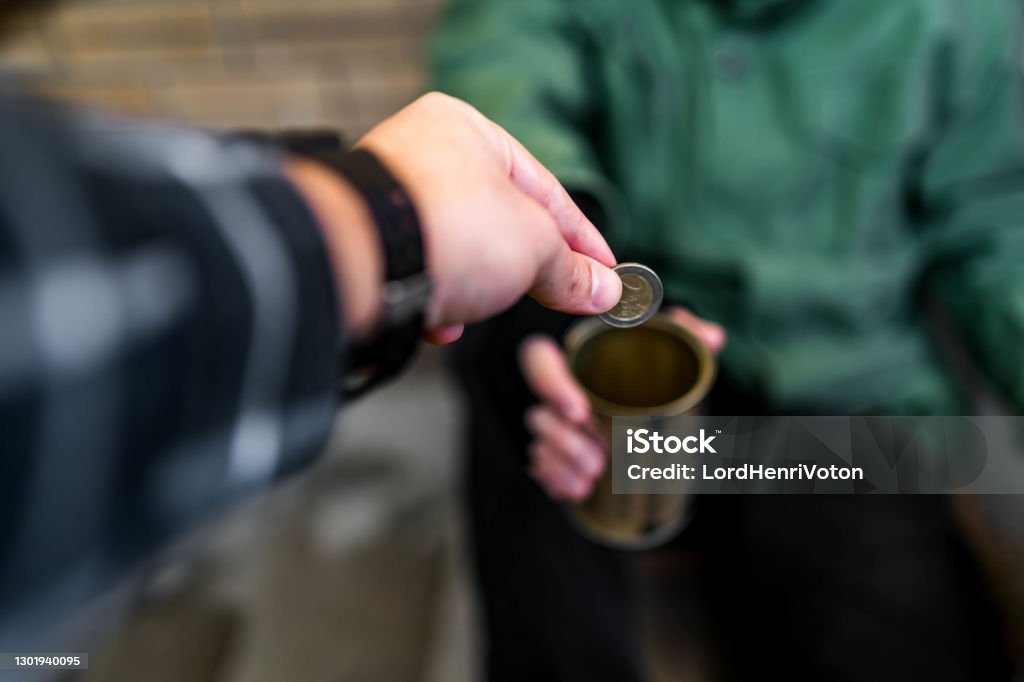
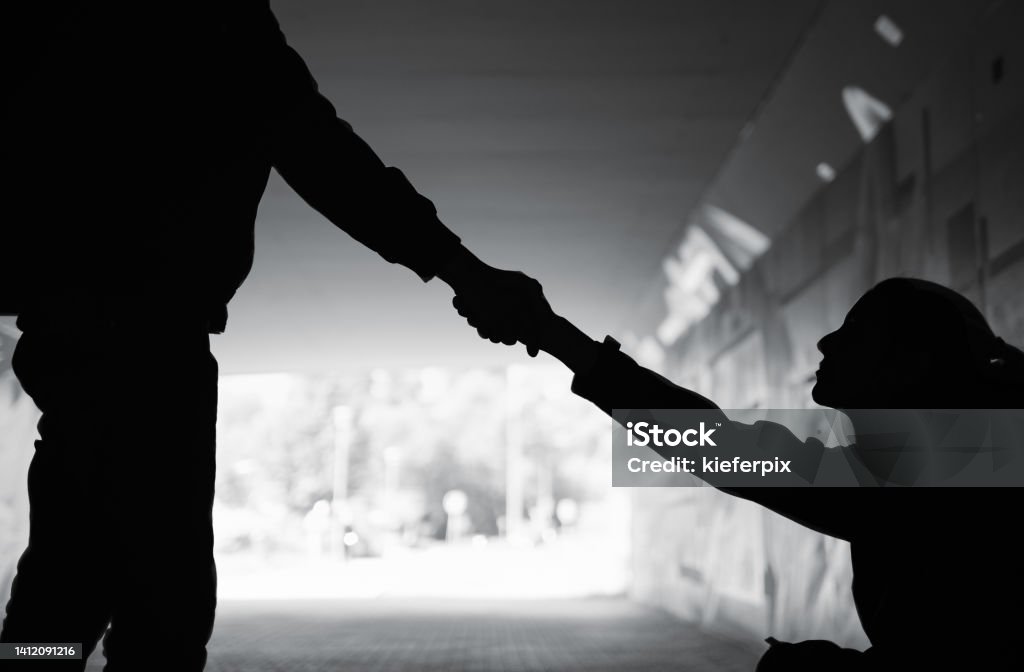


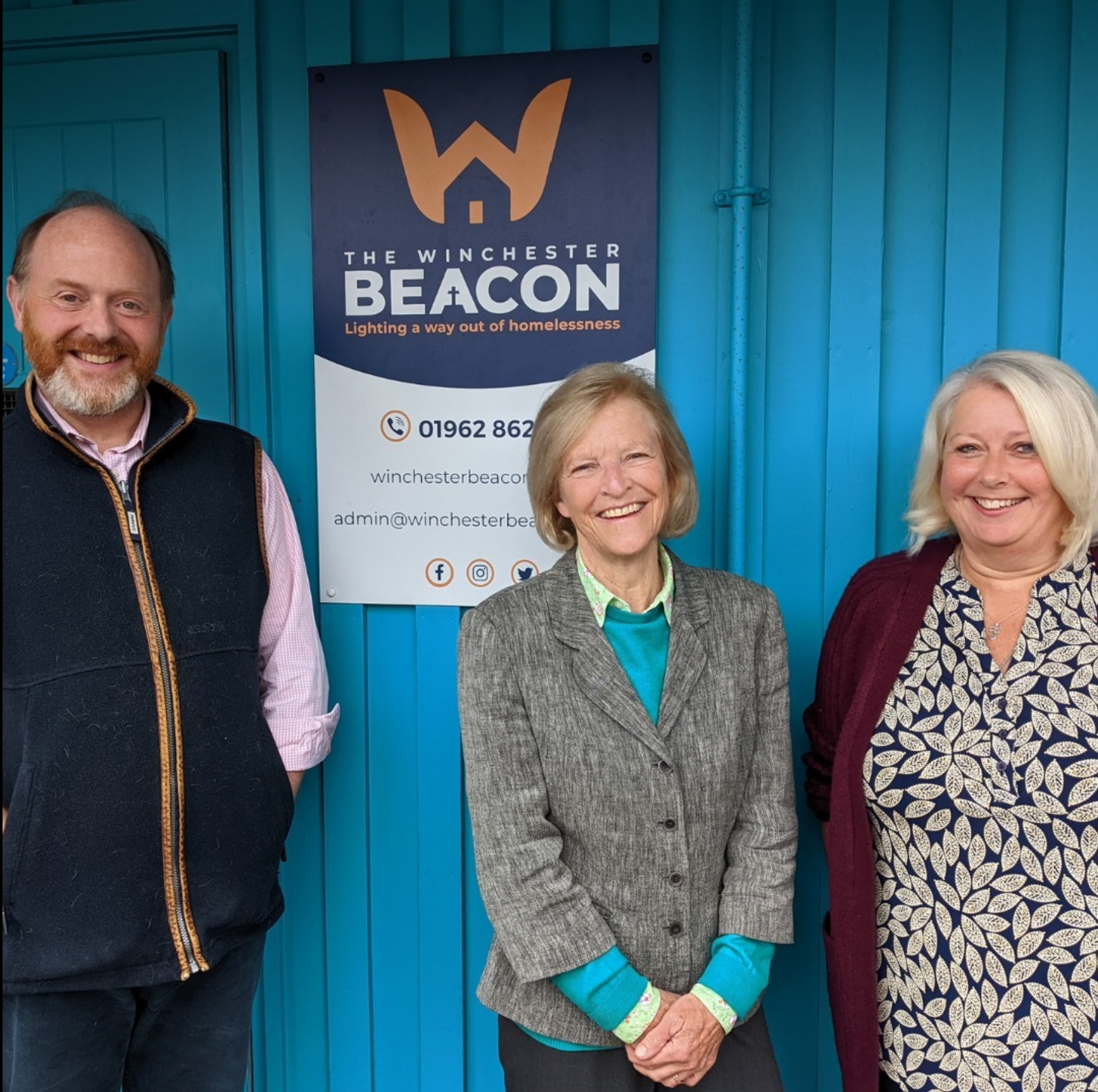
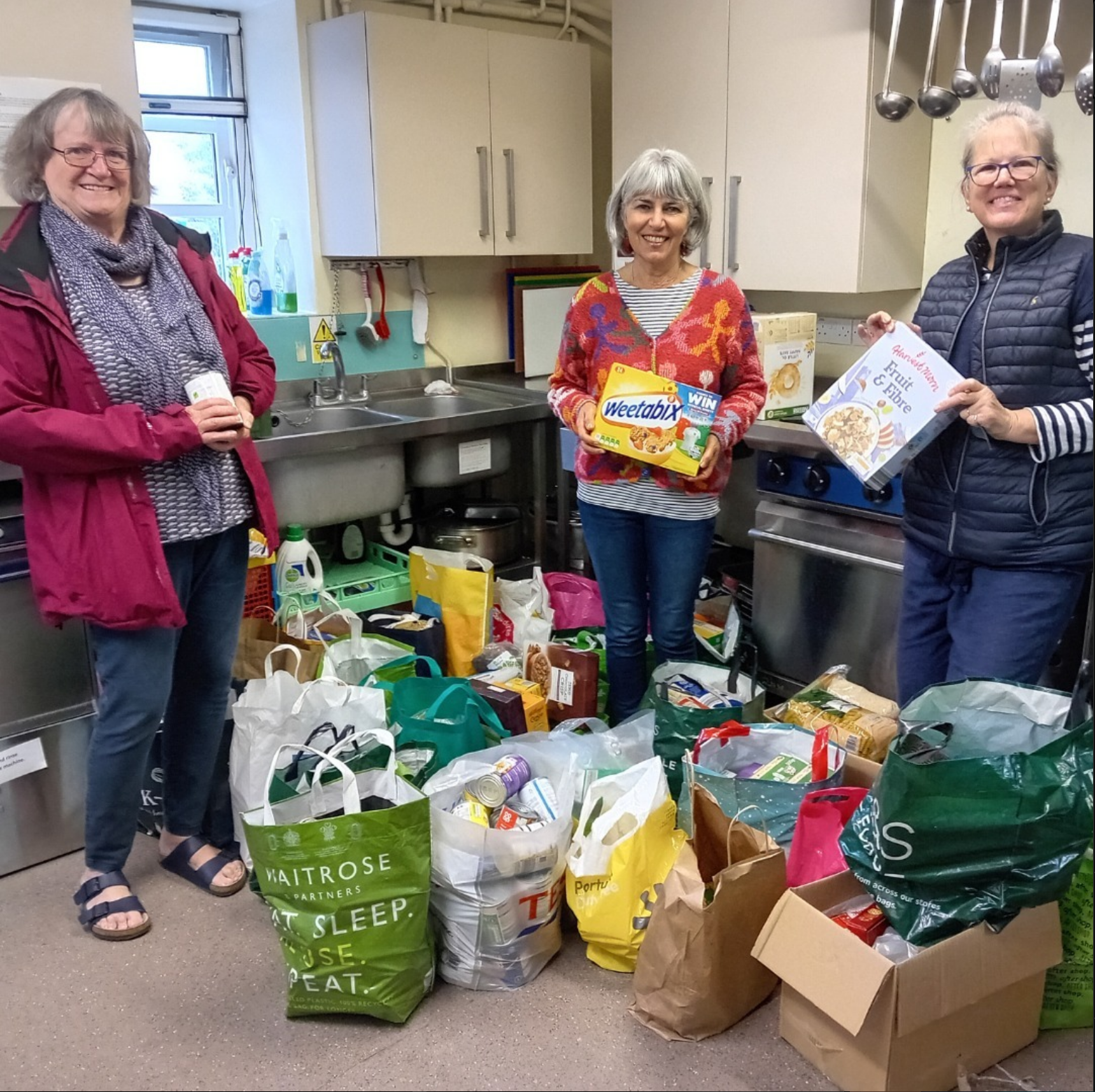
Poster Campaign of awareness of the Beacon charity
Based on the key phrase and the inspiration posters, I selected the information and image to include to the poster, resulting in the following creations.
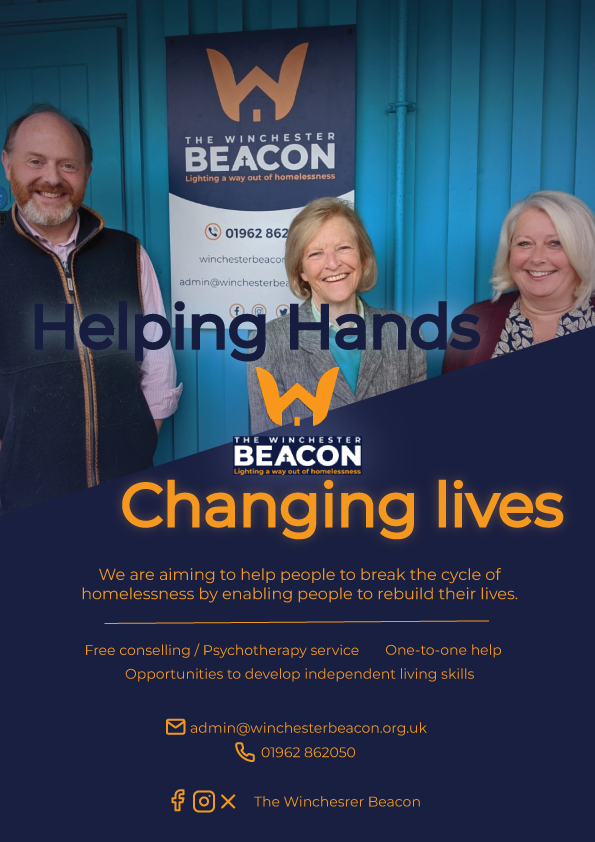

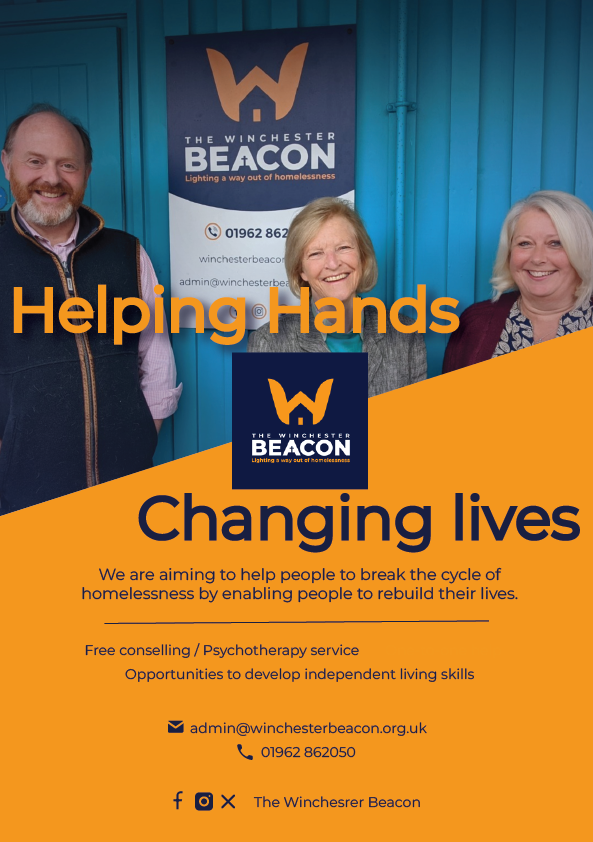

Guided by feedback from my peer, I was advised to change the text colour of "Helping Hands" to white and ensure a clear contrast with the backgroung image and colour.
The design below reflects these changes.
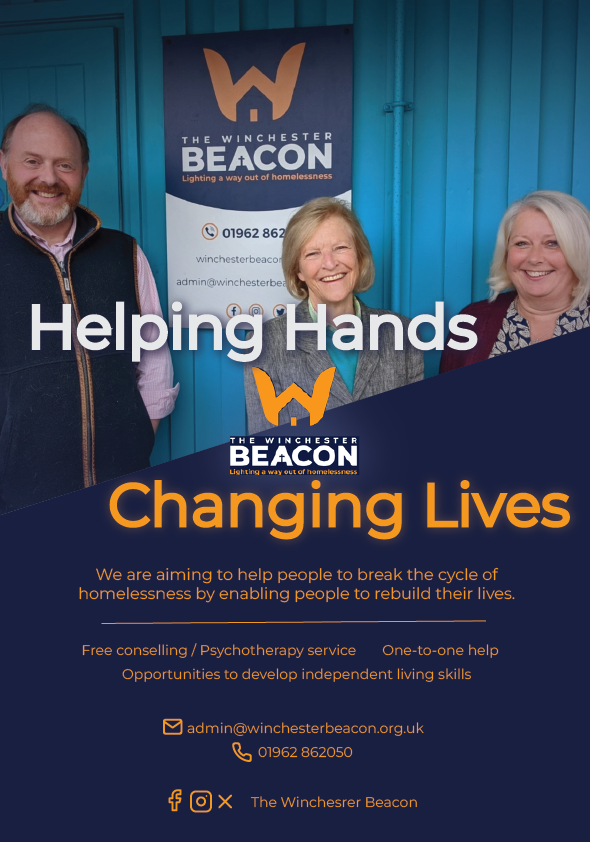
I determined that this design was the most suitable and subsequently selected it as the final version for the handover document.
Poster Campaign of awareness of charitable funds
When I heard about raising awareness of charitable funds, the first thing that came to mind was the charity events organised by the activity group at my university. The team to which I belong organises events, collecting participation fees that are subsequently donated to charitable organisations. Considering that the target audience for this project is university students, I determined that organising such events would be feasible, which prompted to me to pursue this idea. I also came across a poste in which the Winchester Beacon showcased their handmade decorations and gift cards at a Christmas market, which inspired me to consider organising an event to sell their handmade products in a similar fashion. I reached out to the Student Union to inquire about the possibility of hosting such an event. However, I was informed that the Student Union does not manage charity events. Consequently, I decided to treat this event as a hypothetical one and proceeded with the poster design.
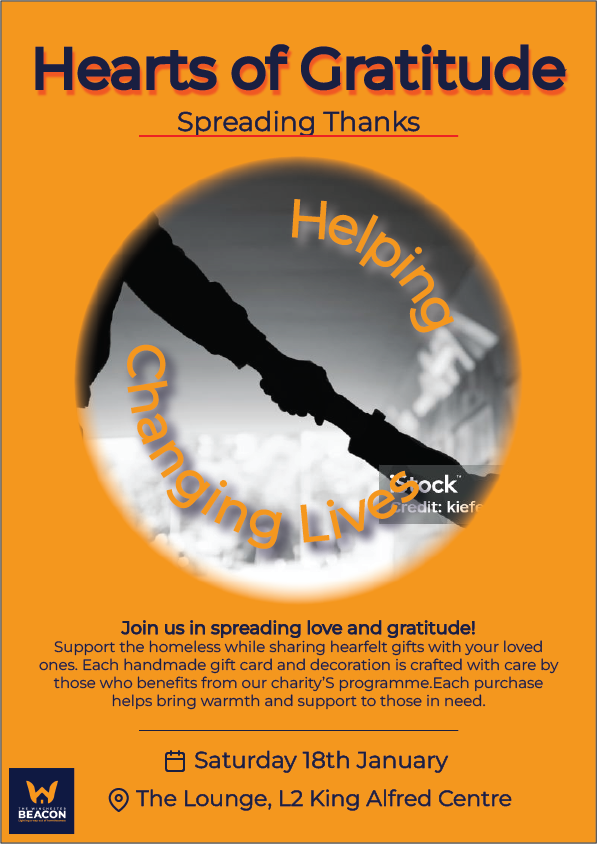
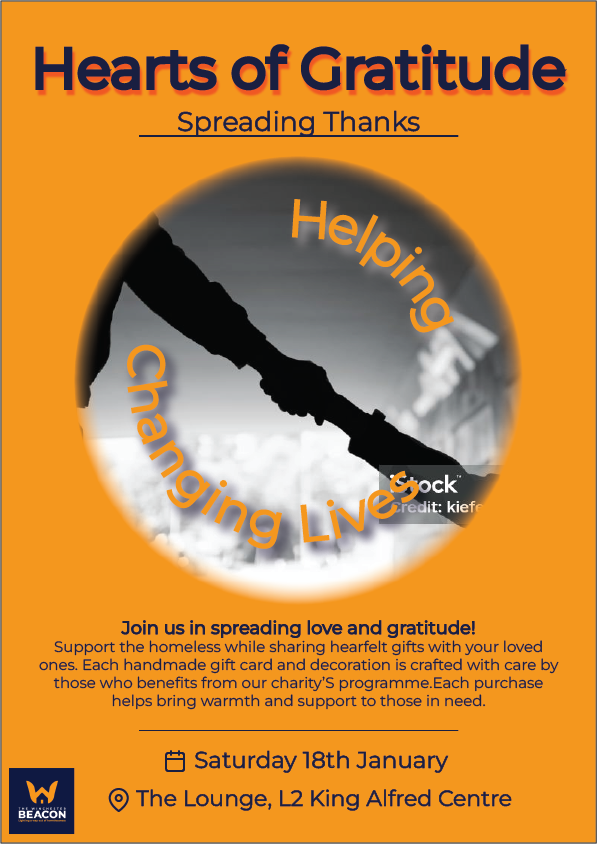
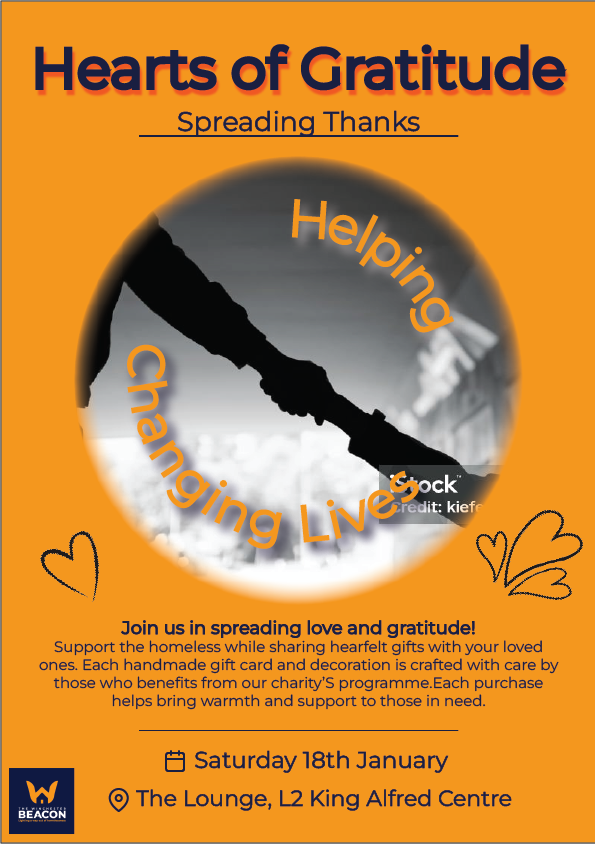
Handover Documents


Mockups design

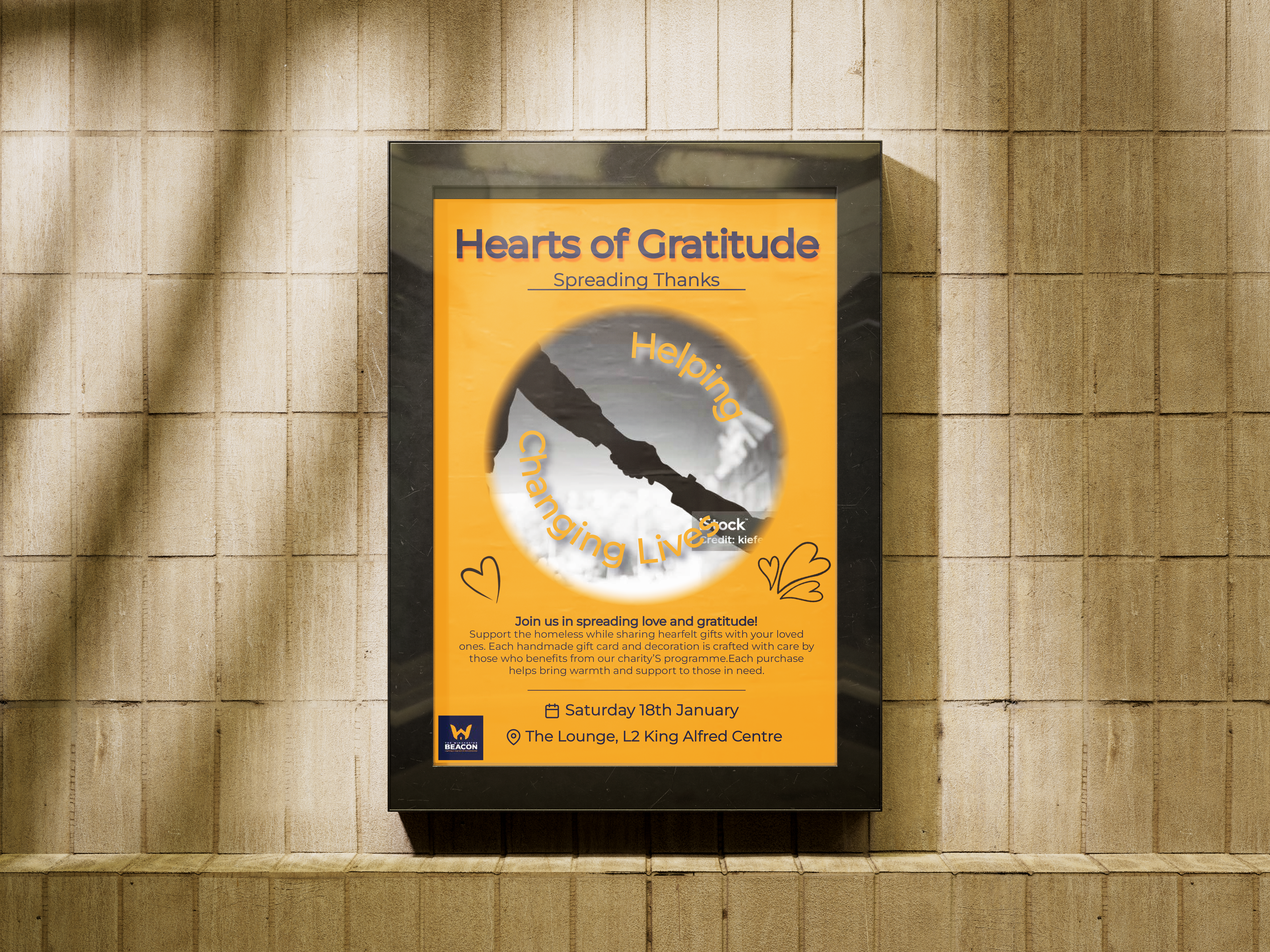
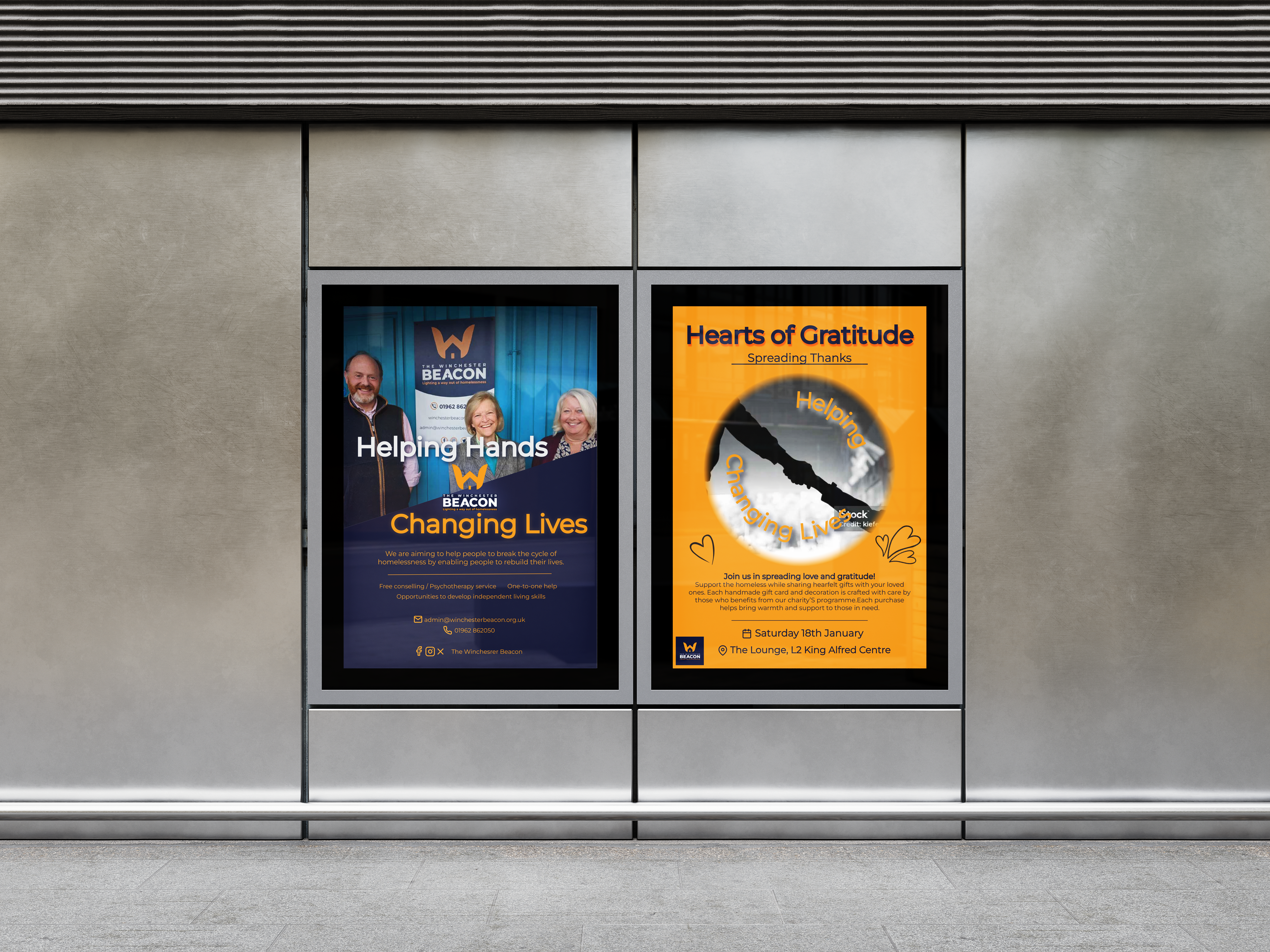
Reflection
What went well
I am thoroughly satisfied with the idea, which was informed by my personal experiences, in this project. I believe this idea would not have come to mind had I not been involved in charity events in my surroundings. In addition, when I discussed this idea to my peer, she disagreed, believing it did not align with the client’s expectations. Nevertheless, I proceeded to with the idea and presented it to the client, which I regard as a success.
In addition, through this project, I came to recognise the significance of receiving feedback from peer. By striving to align closely with the brand guidelines, there were aspects of work with which I was initially dissatisfied. Although, incorporating feedback from other enabled me to refine the design, resulting in a more satisfactory final product.
What could be improved
The area for self-reflection and improvement lies in my time management and communication skills. Time management has long been my problem for me, and through this project, I recognised that my difficulty lies in the delayed identification and organisation of my tasks. In collaborative projects, I found myself progressing without a clear understanding of my responsibilities, particularly in the initial stages. I initially assumed that all tasks assigned to us would be shared equally between the two of us; however, my peer had a different perspective. Furthermore, I did not communicate my perspective to my peer. We completed tasks individually, we did not establish a shared timeline. As a result, I became preoccupied with other tasks, and my part of this project was procrastinating. I did not have the opportunity to receive feedback from the client on my work. This led to a sense of guilt, which delayed my communication about the situation with my peer, ultimately causing them unnecessary concern. Additionally, this situation caused me to put pressure on myself as the deadline approached, further intensifying my stress.
Action Plan
In terms of time management, I have come to recognise the importance of creating a structured schedule, not only for me but also my teammates. The Gantt chart is not only suitable for planning, but also serves as a useful tool for tracking the progress of teammates’ work (Gilmore, 2016). They are particularly useful when managing multiple tasks, so in the next semester, I plan to better track my tasks and establish a plan early on.
Regarding communication skills, my next goal is to openly communicate any concern or uncertainties with my peers, ensuring transparency and collaboration throughout the project. I will prevent situations where, while I remain uncertain, my peers are also left without information, leading to unnecessary anxiety.
Conclusion
While I am satisfied with the final products, I have realised that in collaborative project, it is important not to keep my concerns to myself. I need to communicate early on with my peer to address any uncertainties. In the future, these actions will influence not only my peers but also the client, and I am pleased to have realised this during this project.
References
- Crisis (N/A) About homelessness. Available at: https://www.crisis.org.uk/ending-homelessness/about-homelessness/ [Accessed 05 January 2025].
- Crisis (N/A) Rough sleeping. Available at: https://www.crisis.org.uk/ending-homelessness/key-homelessness-policy-areas/rough-sleeping/ [Accessed 05 January 2025].
- Crisis (N/A) Types of homelessness. Available at: https://www.crisis.org.uk/ending-homelessness/homelessness-knowledge-hub/types-of-homelessness/ [Accessed 05 January 2025].
- Crisis (N/A) What is insecure housing? Available at: https://www.crisis.org.uk/ending-homelessness/about-homelessness/insecure-housing/ [Accessed 05 January 2025].
- Evolve (2024) What is sofa surfing and why is it such a problem? Available at: https://www.evolvehousing.org.uk/2024/02/what-is-sofa-surfing-and-why-is-it-such-a-problem/?gad_source=1&gclid=CjwKCAiA1eO7BhATEiwAm0Ee-LyI35ak-tu8Ff6-YsmIXjQxtZRCv_4ht8hS7Y9Sf3chRRiimY9yXxoCEvoQAvD_BwE [Accessed 05 January 2025].
- Gilmore, N. (2016) 10 Gantt Chart Benefits Every Project Manager Should Know. Teamgantt. Available at: https://www.teamgantt.com/blog/10-benefits-of-using-a-gantt-chart-of-your-next-project [Accessed 06 January 2025].
- The University of North Carolina (2024) Designing Effective Poster: Design Elements. Available at: https://guides.lib.unc.edu/posters/design/overview [Accessed 05 January 2025].
- The University of North Carolina (2024) Designing Effective Poster: Images and Graphics. Available at: https://guides.lib.unc.edu/posters/design/graphics [Accessed 05 January 2025].
- The University of North Carolina (2024) Designing Effective Poster: Layout and Text. Available at: https://guides.lib.unc.edu/posters/design/layout [Accessed 05 January 2025].
- The Winchester Beacon (2023) Our services. Available at: https://winchesterbeacon.org.uk/who-we-are/our-services/ [Accessed 05 January 2025].
- The Winchester Beacon (2023) Vision and Mission. Available at: https://winchesterbeacon.org.uk/who-we-are/vision-and-mission/ [Accessed 05 January 2025].
- The Winchester Beacon (2023) Who we are. Available at: https://winchesterbeacon.org.uk/who-we-are/ [Accessed 05 January 2025].
- Marq (2024) How to Create a Graphic Design Poster that Will Get You Noticed. Available at: https://www.marq.com/blog/6-essential-elements-graphic-design-poster [Accessed 05 January 2025].
Bibliography
- The University of Edinburgh (2024) Gibbs’ Reflective Cycle. Available at: https://reflection.ed.ac.uk/reflectors-toolkit/reflecting-on-experience/gibbs-reflective-cycle [Accessed 06 January 2025].
- The Winchester Beacon (2023) Support services – more than just a bed. Available at: https://winchesterbeacon.org.uk/stay-at-the-nightshelter/more-than-just-a-bed-support-services/ [Accessed 05 January 2025].
- The Winchester Beacon (2024) 21 November. Available at: https://www.instagram.com/p/DCpLiE5PHx7/ [Accessed 03 January 2025].